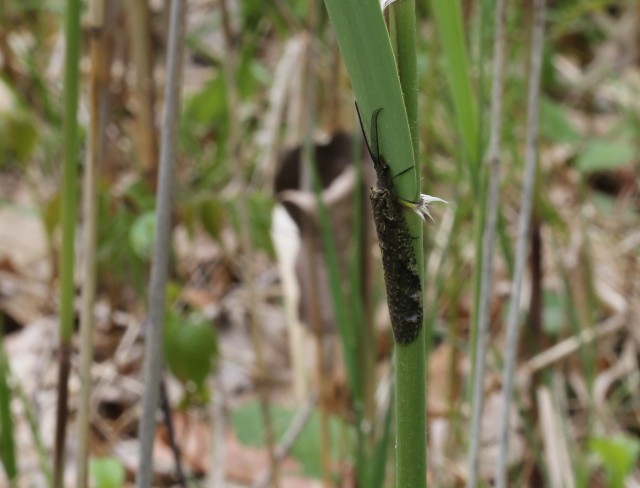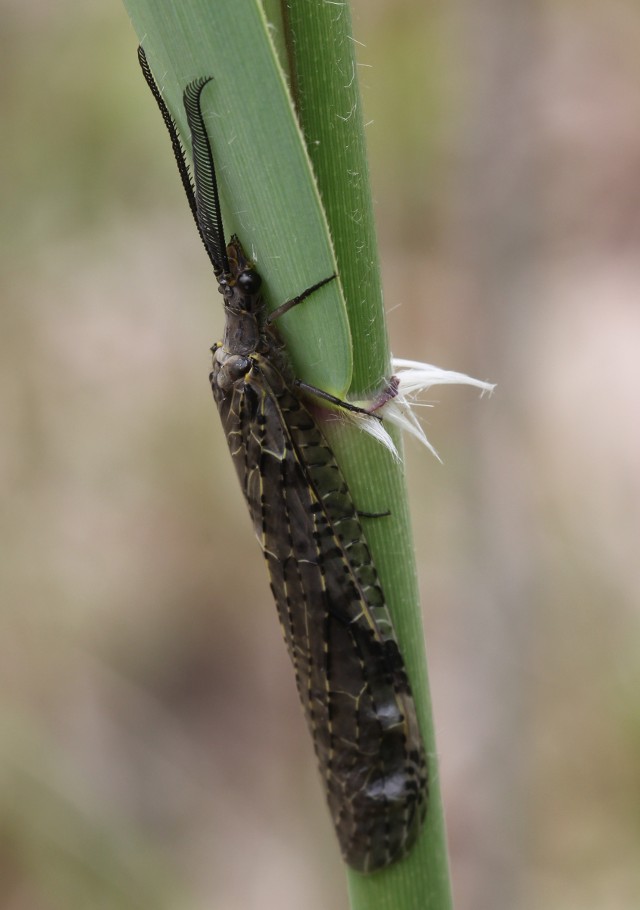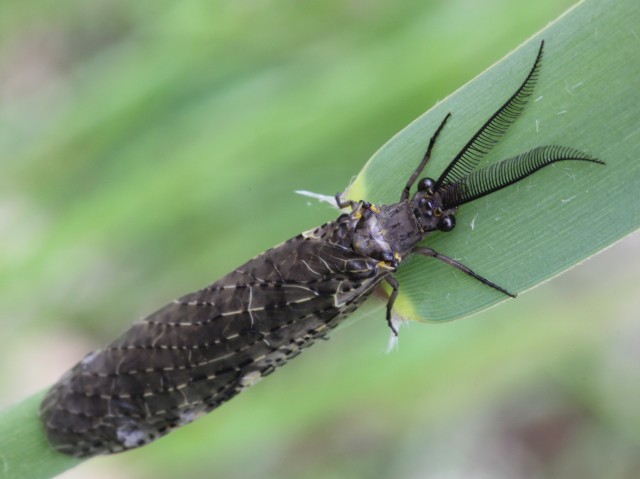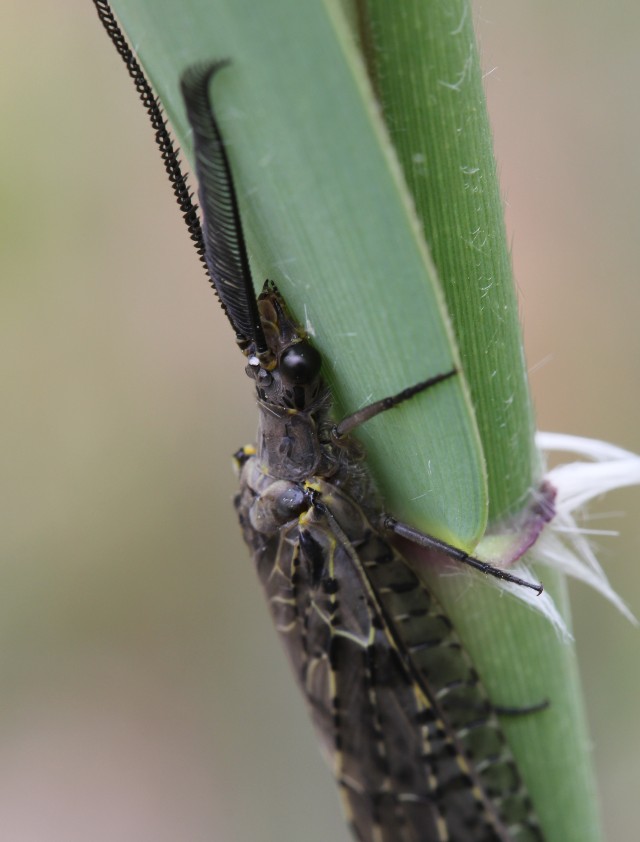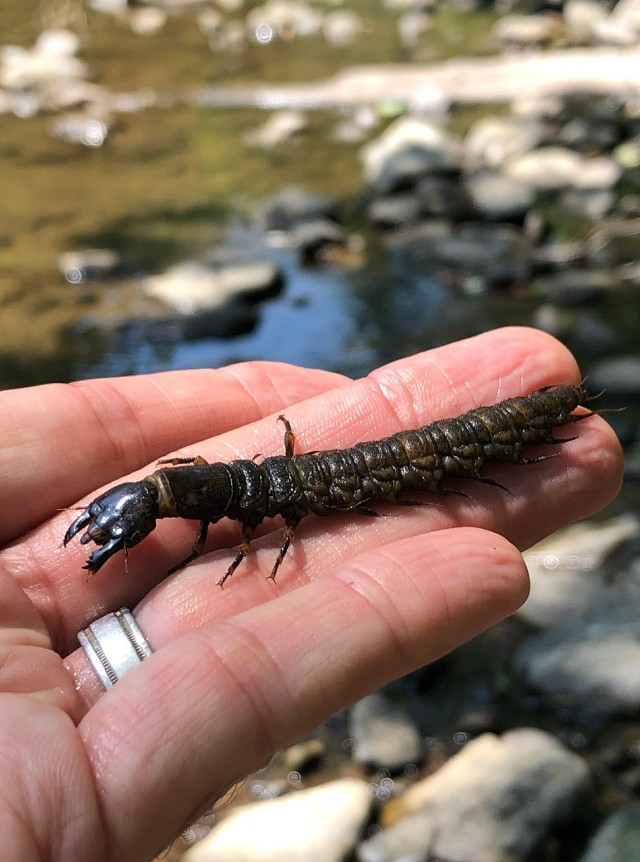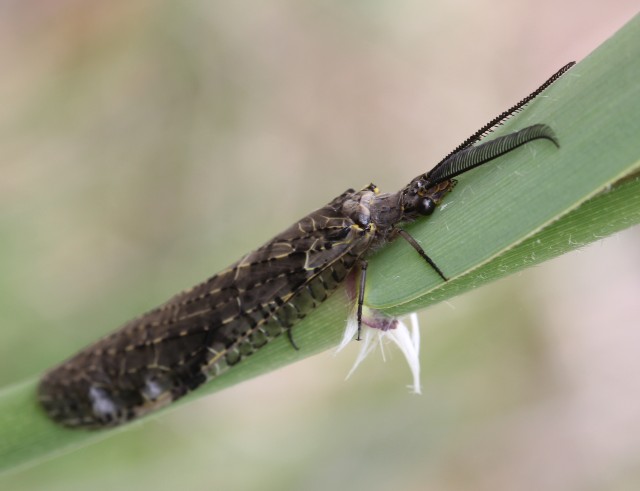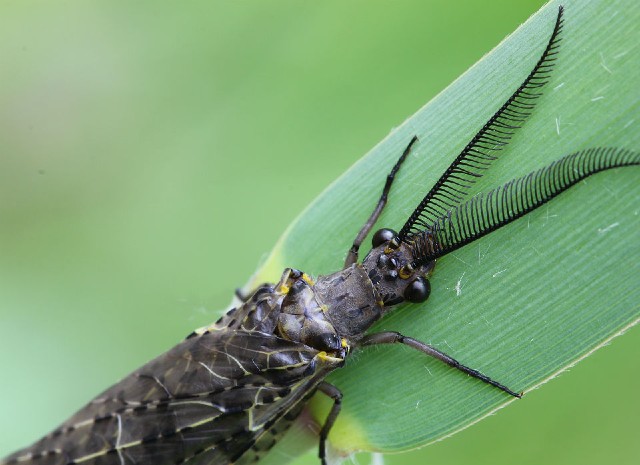While hiking in Cuyahoga Valley National Park, I came across this cool insect. It can be found throughout much of eastern North America. Adults are generally found near the water that their aquatic larvae require and can be found in a variety of aquatic habitats, including ponds, swamps, marshes, and springs.
Fishflies are quite large, with a wingspan of 2-1/2 to 3 inches. Their wings are delicate and very long, much longer than their body. The wings are clear and tinted pale brown, with no dark or white markings apart from the veins. There are two large compound eyes on the sides of the head and three small simple eyes (ocelli) in a triangle on top of the head. The antennae are long, dark brownish-gray, and have many segments.
This is a primitive creature, having appeared on earth more than 260 million years ago. Fishflies, Alderflies and Dobsonflies belong to the insect order Megaloptera, which means “great wing.” Their entire lifespan is several years, but most of this time is spent in their immature aquatic state. They only live up to seven days as adults.
The larvae of both Dobsonflies and Fishflies are called Hellgrammites, and are, famously, sold to fishermen as bait. Hellgrammites are thick and somewhat flattened, dark brown and shiny, with an impressive head, six legs and seven or eight finger-like filaments along each side.
Fishflies lay their eggs upon vegetation overhanging streams, whereby the larvae, as soon as they hatch, drop into the water, and go about preying upon aquatic animals, including vertebrates like minnows and tadpoles, as well as aquatic plants.
These insects practice complete metamorphosis, hatching from eggs, living as aquatic larvae, resting and changing as pupae and emerging as adults. Like many of the insects that develop this way, their appearance, habitat and diet changes radically in their different life stages.
Adults are active at dusk but remain hidden during the day. The wings are held roof-like and to the side of the abdomen when at rest. They are relatively weak fliers. It was super cool to find one of these; there is also a later-emerging Summer Fishfly.

